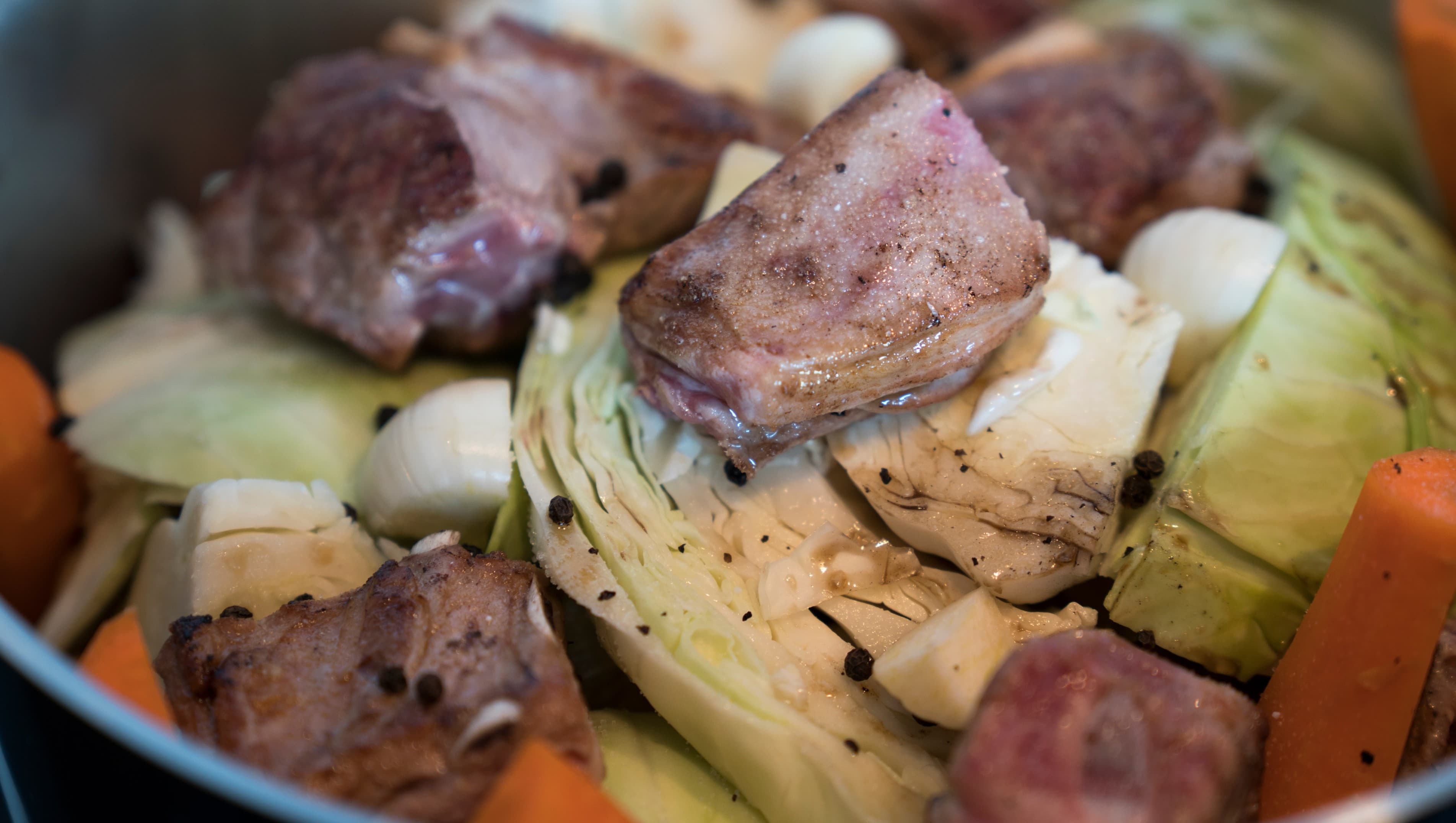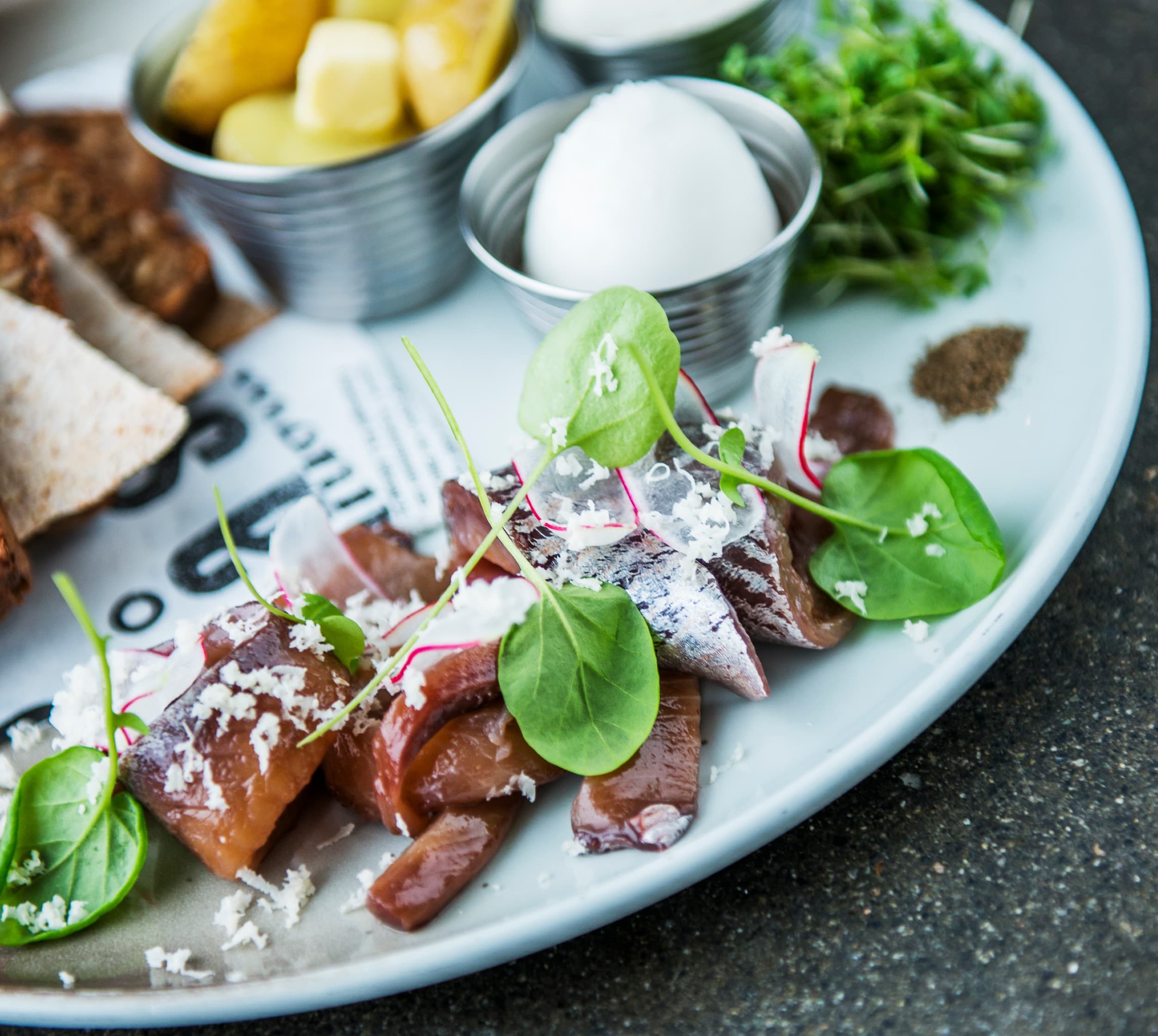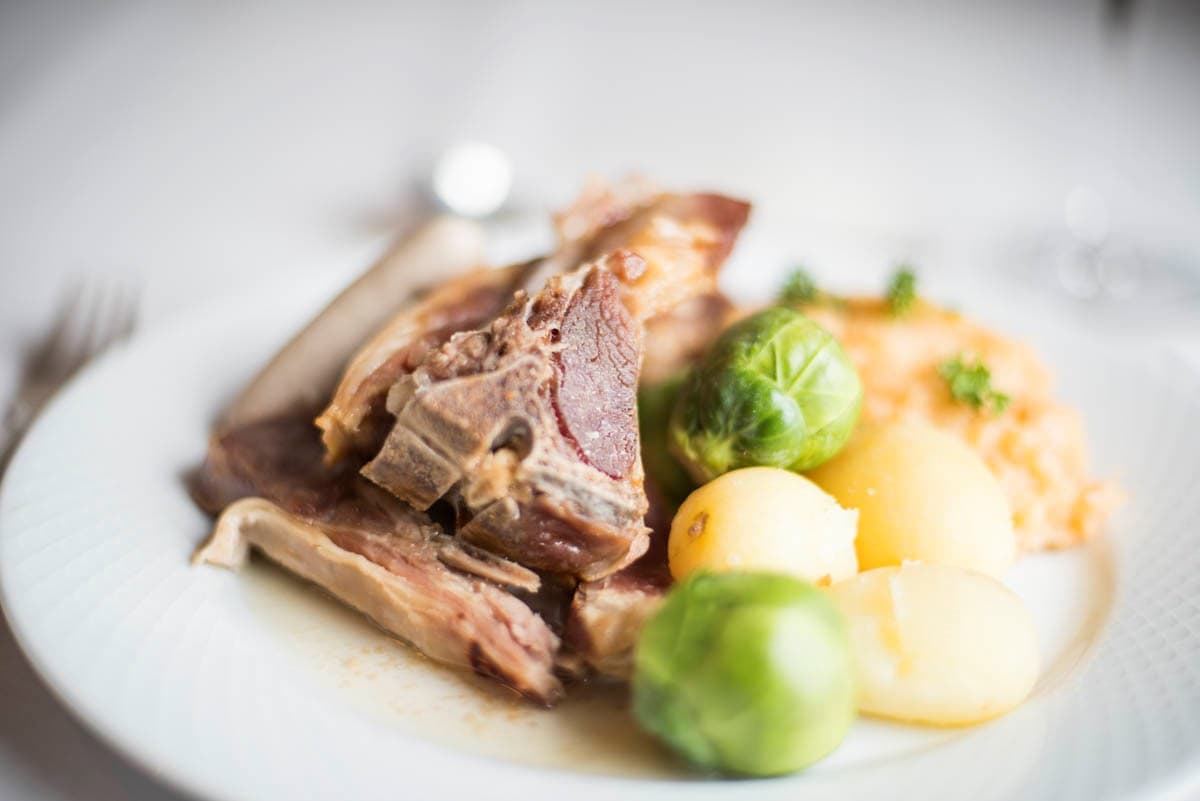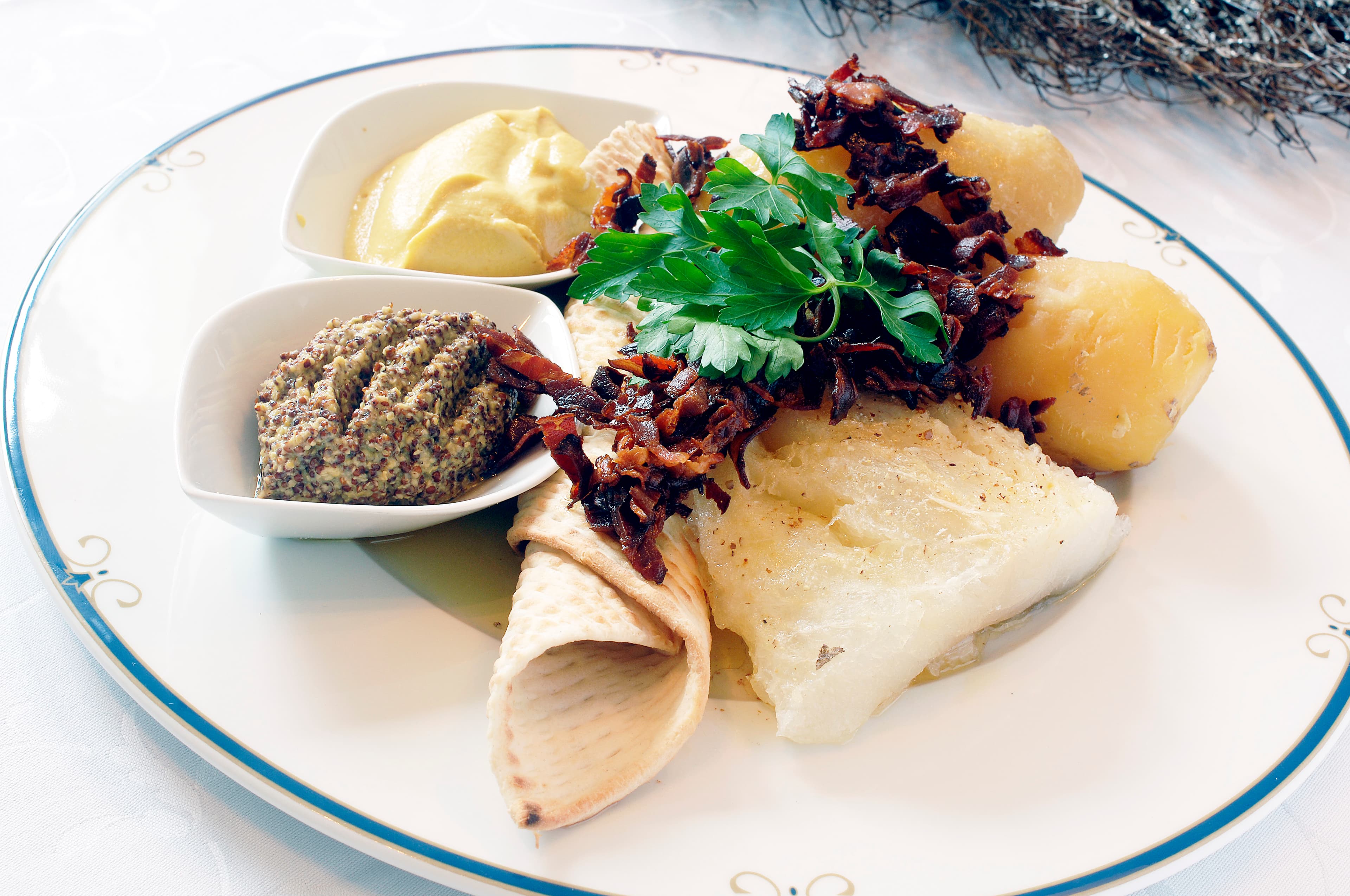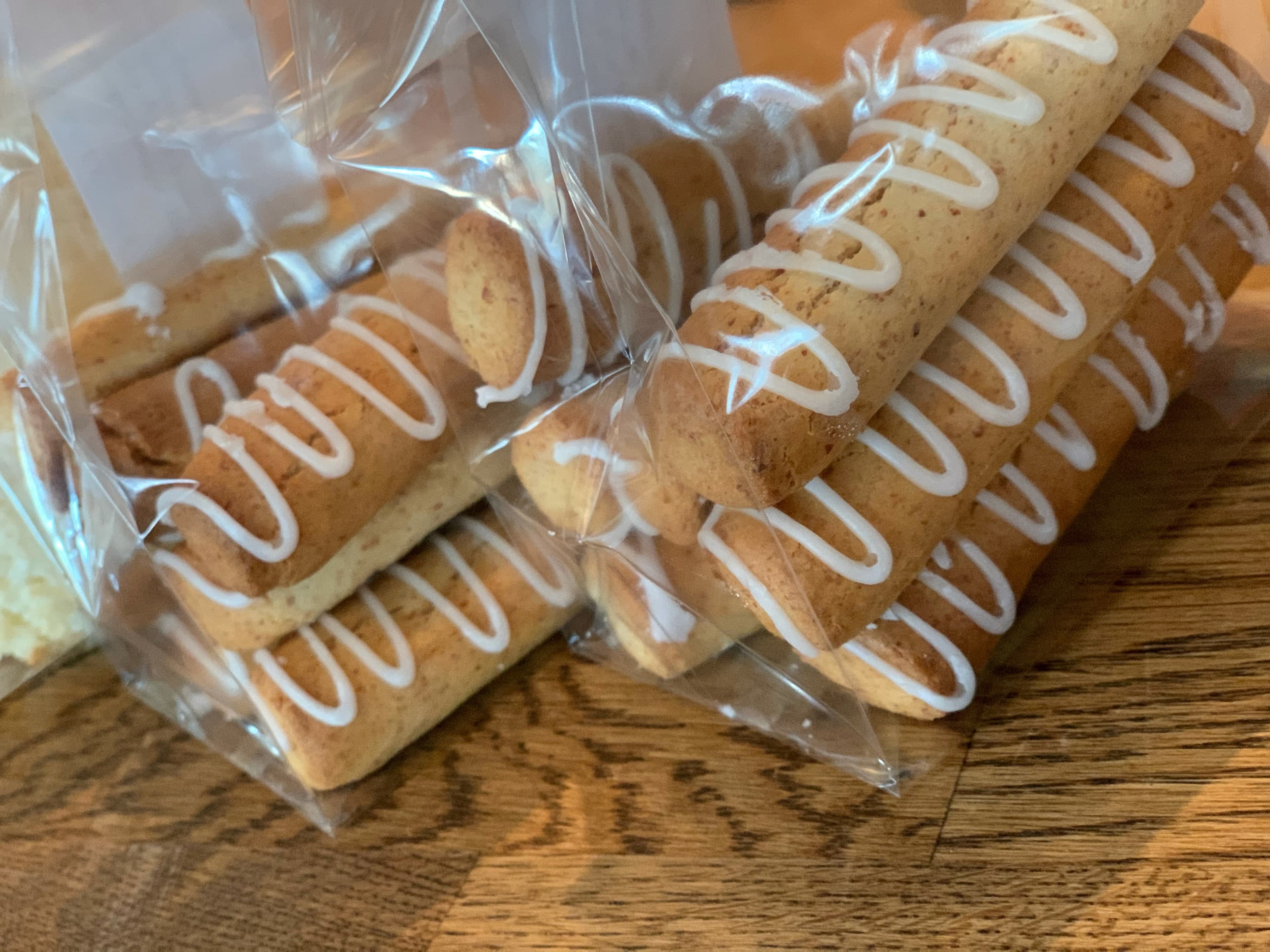
— Komle at Lura Turistheim
Food and drink
Norwegian food traditions and recipes
Last updated 2025-12-13
In earlier days, before WWII, and to a certain extent in the years following the war, the majority of Norwegians lived very much in tune with nature; we were farmers and fishermen and therefore totally dependent on nature’s resources to put food on the table. Being a country surrounded by the North Sea, a lot of the food supply came from the sea, in addition to the land.
Preservation methods
It was not before the 1950s that Norway started to get fridges into their households, before this it was crucial to conserve and preserve the food in the best way people could. Every family had to dry or salt their fish and meat and pickle their fruit and vegetables to make the supply last through the winter. People were typically used to making the most of what they had. Food waste was not an issue then, as people grew up with the notion of using every part of the fish and animal, as well as all that the land could provide. Most of the dishes we eat at holidays and celebrations today have their origins in this approach to cooking. Today, we consider these dishes as a feast!
If you don't see yourself making the dish "komle", you can try it at the traditional Lura Turistheim.

Restaurant
Lura Turistheim
Sandnes
Lura Turistheim has been serving traditional Norwegian food since 1949 - komle, meatballs, fish gratin and other classics made from scratch.
Typical, traditional dishes
The potato arrived in Norway in the 1700s, firstly as a grain substitute to make bread, later for use in dishes, often to stretch meat or meals. Potatoes were particularly important to people’s survival during the occupation from 1940 – 1945. They were easy to grow and had important vitamins. The potato would typically be mashed, boiled, baked or even fried in fish oil. More than 600,000 tons of potatoes were eaten a year during the war as opposed to half of this before the war. The traditional potato dumpling "komle" (also called raspeball, kompe, kumle, klubb, or potetball in Norwegian) is a typical dish made from potatoes. Komle is common in the southwest of the country, and it has many regional variations and different names depending on where in the country you are. In the Stavanger region, it is commonly eaten on Thursdays (we call it komle-torsdag).
Recipe for komle (typical for the southwest of Norway):
Serves 4 people:
- 600 g (1 1/3 pounds, 3 large) potatoes
- 300 g boiled potatoes
- 2 - 3dl (about 1 cup) barley flour
- stock from salt pork or salted lamb
Wash and peel the raw potatoes. Grate. Mash the boiled potatoes. Combine the potatoes with flour. Make round balls with a wet serving spoon. Simmer 30 – 40 minutes in stock from salt pork and smoked mutton. Serve with boiled salted mutton or lamb, fried bacon, carrots, rutabaga and boiled potatoes (yes, it is served with more potatoes!).
Other popular meat dishes
Chicken fricassee, lamb stew/ lamb fricassee or salted meat with peas are just some of the stews traditionally eaten in Norway. The lamb stew Fårikål is considered to be the national dish of Norway. Read more and find the recipe.
Dried, cured, smoked, salted and pickled fish
Stockfish (tørrfisk in Norwegian) is unsalted fish, normally cod left to dry on wooden racks by cold air and wind. Drying of food is a well-known preservation method, and dried fish can last up to several years. A perfect way to preserve food in the climate we have here in Norway. Another variety of dried fish is the klipfish (klippfisk in Norwegian). Klipfish is salted before drying; the process of salt-maturing, similar to how the famous Parma ham is matured. Herring used in different ways is also an important product in Norway. You find it pickled or salted, i.e. spekesild, sursild, kryddersild, sennepsild and tomatsild to mention a few. Cured or smoked salmon (gravlax) is also a product typical of Norway.
Recipe for gravlax:
- 1 boneless salmon fillet with skin (Must have been frozen)
- 2 tablespoons of salt
- 2 tablespoons of sugar
- 10 crushed juniper berries
- 2 tbsp cognac
- Coarsely ground pepper
- Dill
Spread everything over the fillet. Cover the whole fillet with dill. Put the fillet in a plastic bag and tie shut. Put a little pressure on the fillet. Turn it every day. After three days it's finished.
Mustard sauce with dill
- 4 egg yolks
- 1 tablespoon of sugar
- 1 - 2 tablespoons of vinegar
- 3 tablespoons of Dijon mustard
- 1 tablespoon of regular mustard
- 2.5 dl soybean oil
- Salt and pepper
- 3 tablespoons of chopped fresh dill
Mix everything and stir well. It's nice to serve everything with dill-stewed potatoes.
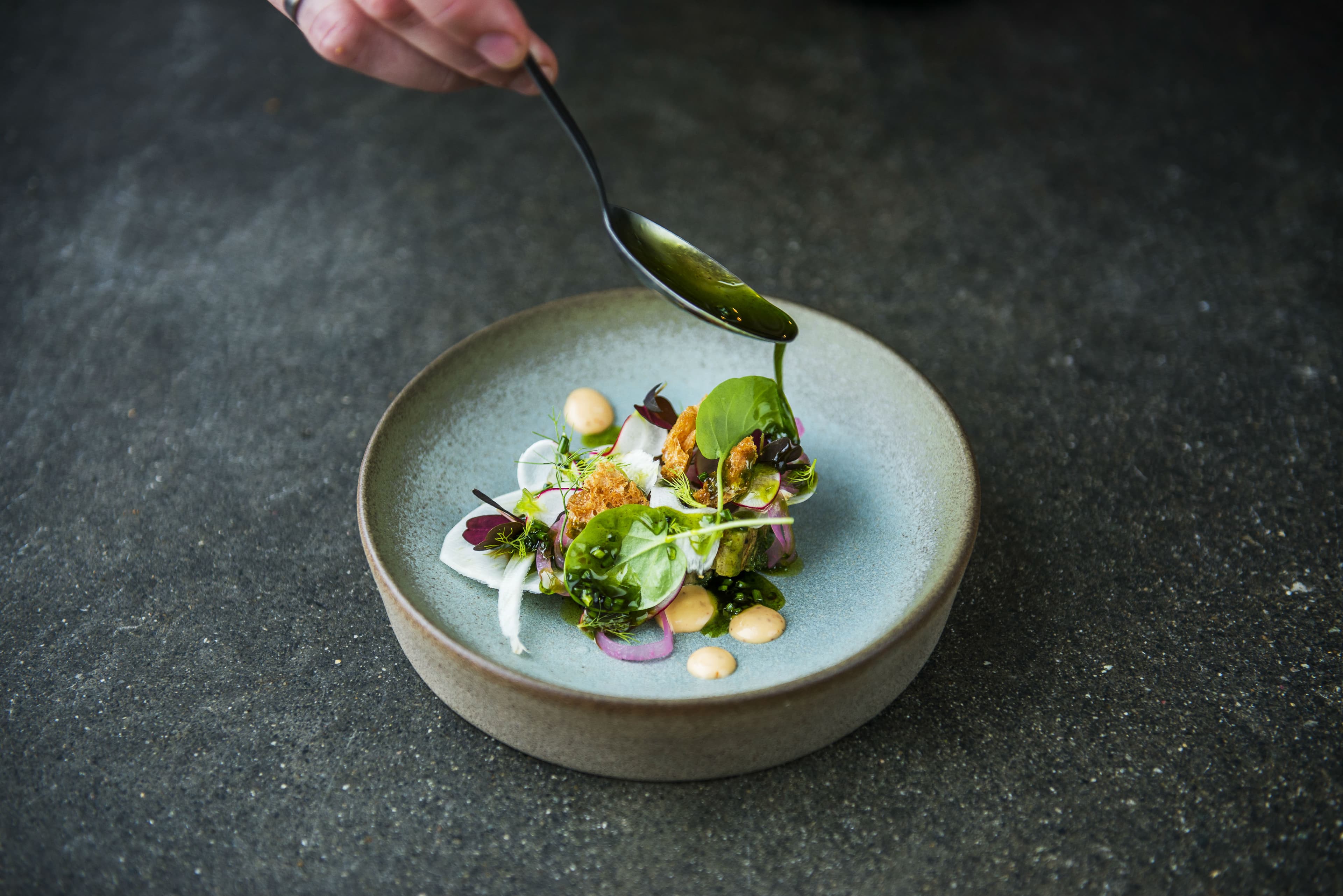
Restaurant
Fish Market Stavanger - The Restaurant
Stavanger
A restaurant with fish and seafood, where the menu is based on today's catch.
Sour cream porridge (rømmegrøt)
Sour cream porridge is perhaps one of the oldest dishes in Norway, it is said that even Vikings ate this dish. Served with dried and cured meats, this dish was festive food in the olden days and is still considered that today.
Recipe:
Sour cream porridge must be made from high fat (35%) natural sour cream. Serves 5:
- 6 dl (2,5 cups) 35% fat sour cream
- 3 dl (1 ¼ cups) barley flour
- 1 litre (quart) full-fat milk
- 1 teaspoon salt
Combine sour cream and barley flour and simmer until the butterfat begins to leach out. Skim off the fat. Cook until the porridge is reddish-brown, 1 – 2 hours. Bring the milk to a boil and thin out the porridge to the desired consistency. Season with salt. Serve with melted butterfat, sugar and cinnamon.
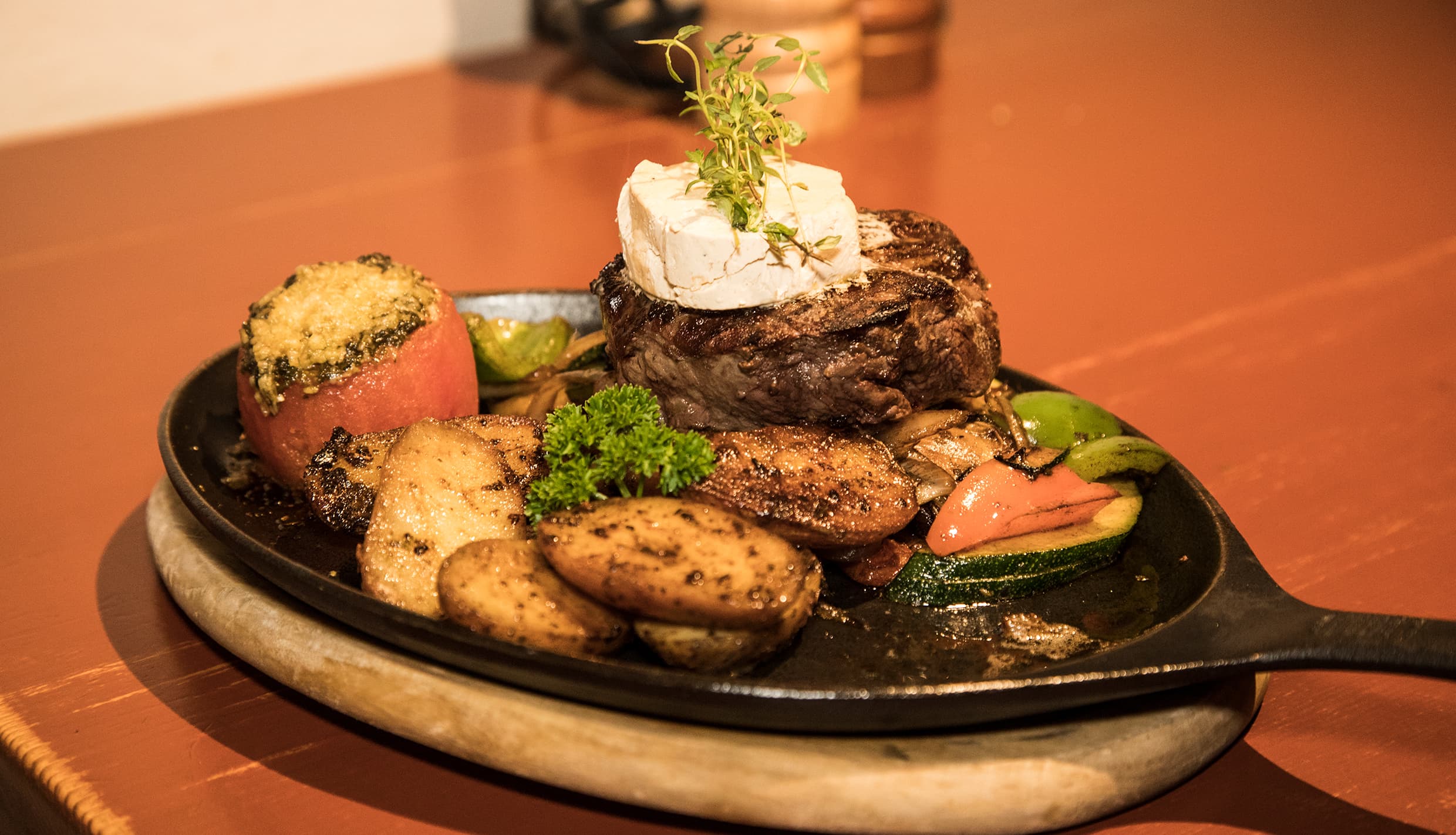
Restaurant
Byrkjedalstunet - Restaurant
Byrkjedal
Enjoy traditional food at Byrkjedalstunet restaurant – authentic Norwegian flavours, local history and a unique atmosphere in the heart of beautiful Dalane.
Christmas season dishes
In Norway, one-third of the population eats “pinnekjøtt” for Christmas dinner, making the dish second most popular after the pork belly used by 60% of the population. The pork belly is slowly cooked in the oven with skin and served with crackling accompanied by potatoes, pork patties, the sausage medister as well as red cabbage and sour cabbage. Pinnekjøtt originates from earlier days of farming where salted and dried meat was an important part of the diet. It was typical mostly in areas with a large sheep stock, such as here in the western part of Norway. Lutefisk is another dish typical of the holiday season, made from air-dried whitefish, dried and salted cod, and pickled in lye. Lutefisk is traditionally served with boiled potatoes, mashed green peas, melted butter and small pieces of fried bacon.

Restaurant
Lura Turistheim
Sandnes
Lura Turistheim has been serving traditional Norwegian food since 1949 - komle, meatballs, fish gratin and other classics made from scratch.
Recipe for pinnekjøtt
Serves 4 people:
- 2 kg pinnekjøtt
- 1,5 kg swede peeled and chopped
- 3 medium carrots washed and chopped
- 2 medium potatoes peeled and chopped
- 50 ml double cream
- 50 ml single cream
- 4 tbsp salted butter
- 75 ml cooking stock from the pinnekjott
- pinch of ground nutmeg (optional)
- salt
- ground black pepper
The meat: The day before eating:
Place the pinnekjøtt in large containers filled with water. Make sure the meat is covered in water. Leave in room temperature for approx. 30 hours. 3 hours before you plan to eat: Pour off the water and place the meat to one side. In your biggest casserole(s), place a metal rack or birch branches in the bottom. Add water until it covers the rack or your branches. Place your meat on top and cover with a lid. Leave to gently steam at low heat for approximately 3 hours. The meat is done when it seperates from the bone. You can add sausages into the casserole for the last 15-20 minutes.
Swede mash - (kålrabistappe):
Peel vegetables and chop into even-sized pieces. Boil until tender in lightly salted water. Leave for 3 minutes to dry, then mash by hand. Add cream and butter and give it a good stir. Add salt and pepper to taste. Add a pinch of ground nutmeg (optional). If the consistency of the mash is too thick, add some of the pinnekjøtt cooking water.
The pinnekjøtt is served with freshly boiled potatoes and the swede mash. Some people also use lingonberry jam and brussels sprouts.
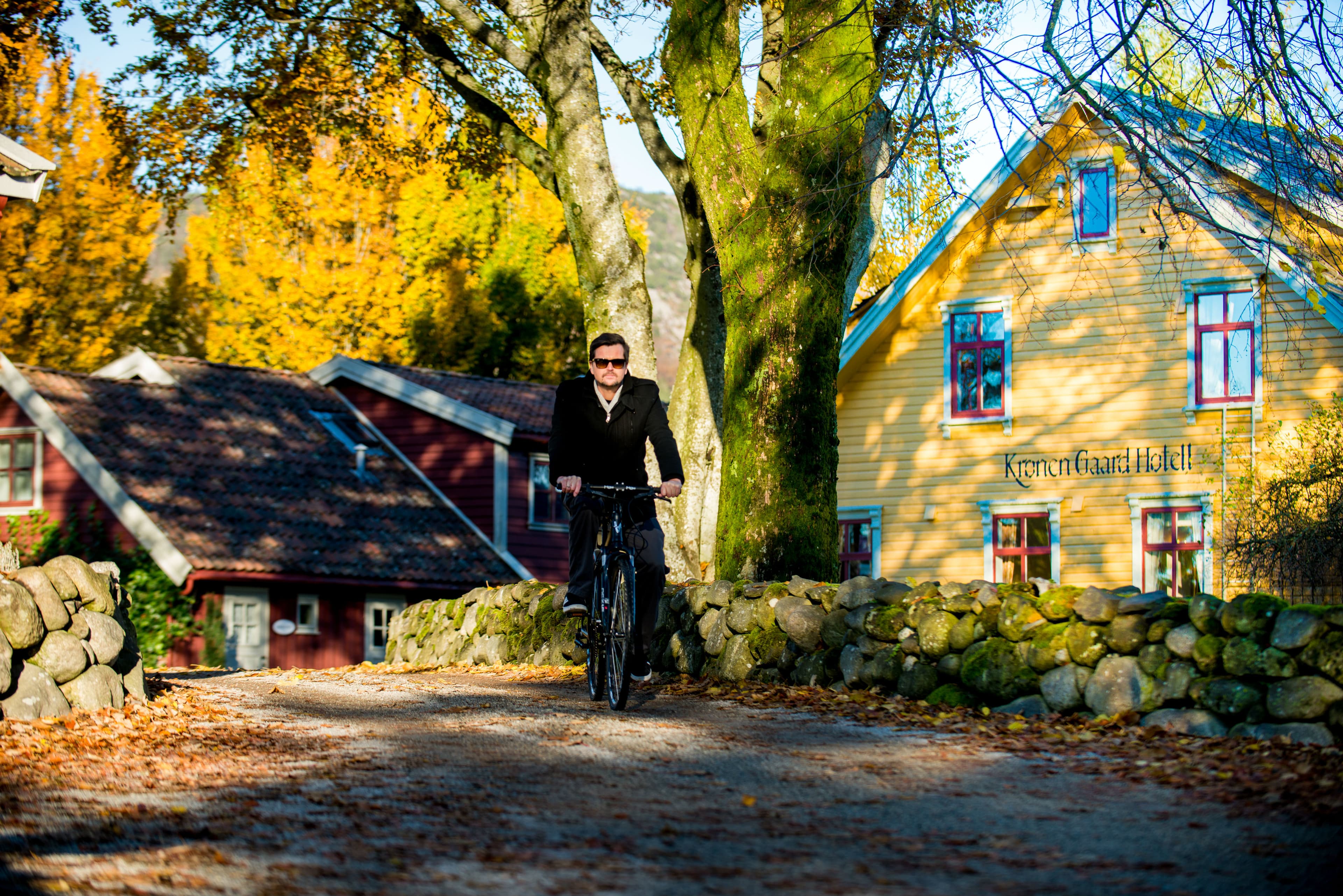
Hotel
Kronen Gaard Hotell
Sandnes
Explore the tranquility, charm, quality food and historical bustle of the Kronen Gaard Hotel: a traditional and cozy hotel in a rural setting, a short distance from the center of Sandnes.
Do you have a sweet tooth?
If you do, you must try these Norwegian desserts. Both are typically served for Christmas. The porridge is a common dessert for Christmas dinner, and the almond cake is also festive. Have you heard about the tradition of putting a blanched almond in the porridge bowl? The lucky porridge eater who gets the almond is gifted with a wrapped present. Depending on each family's traditions, this present is often a marzipan pig or a chocolate figure. The trick is to hide the almond in your mouth until everyone has finished eating, leaving guests guessing who had the almond.
Recipe for rice cream/ rice porridge (riskrem in Norwegian)
Serves 4
- 4 dl (1 ⅔ cups) water
- 1 ¾ dl (¾ cup) round rice grain
- 1 litre (quart) full-fat milk
- 2 tablespoons of butter
- 1 teaspoon of salt
- Sugar
- 2 ½ dl (1 cup) whipping cream
Boil the water and add the rice. Add salt. Return to boil and simmer until all water is absorbed, approx. 15 minutes. Add milk and bring to a boil. Lower the heat, and simmer until the rice is tender, about 35 – 45 minutes. Add the sugar. Cool. Whip the cream and fold the porridge into the cream. Sweeten with sugar. Serve with sauce from berries.
Almond cakes
- 6 dl (2,5 cups) finely ground blanched almonds
- 10 dl (4 ⅓ cups) sifted icing sugar (sift first, then measure)
- 3 egg whites
Icing:
- 2 dl (scant 1 cup) sifted icing sugar
- 1 egg white
Preheat the oven to 200 C (400 F). Pour almonds and icing sugar into a saucepan. Add the unbeaten egg white and mix to a firm dough. Place the pan over low heat and knead until the dough is so hot that is almost impossible to handle. Roll out to a thick roll and cut at approx. 7 cm in length. Bake them 12 – 15 minutes until dry and firm outside, and slightly soft inside. Cool them completely. Icing: Sift the icing sugar and combine with egg white to make a thick icing. Make a small cone of paper and cut off the tip. Pipe on garlands of icing and stack.
If you're not planning on baking anytime soon, don't despair! You can buy these treats all over the Stavanger region in the time leading up to Christmas. Ryfylkekokken also has a lot of other cakes typical for the holidays.

